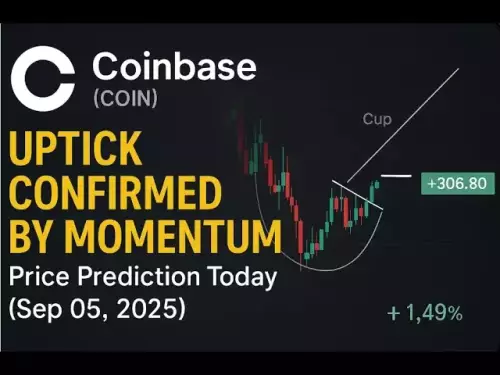-
 Bitcoin
Bitcoin $111400
1.19% -
 Ethereum
Ethereum $4330
1.06% -
 XRP
XRP $2.851
1.74% -
 Tether USDt
Tether USDt $1.000
0.00% -
 BNB
BNB $851.3
0.83% -
 Solana
Solana $205.5
0.99% -
 USDC
USDC $0.0000
0.00% -
 Dogecoin
Dogecoin $0.2167
2.37% -
 TRON
TRON $0.3325
-0.67% -
 Cardano
Cardano $0.8354
3.62% -
 Hyperliquid
Hyperliquid $46.90
5.09% -
 Chainlink
Chainlink $22.43
0.60% -
 Ethena USDe
Ethena USDe $1.001
-0.01% -
 Bitcoin Cash
Bitcoin Cash $613.8
4.60% -
 Sui
Sui $3.400
4.37% -
 Stellar
Stellar $0.3603
2.19% -
 Avalanche
Avalanche $24.45
0.44% -
 Hedera
Hedera $0.2203
3.90% -
 Cronos
Cronos $0.2672
0.45% -
 UNUS SED LEO
UNUS SED LEO $9.533
0.10% -
 Litecoin
Litecoin $113.1
2.80% -
 Toncoin
Toncoin $3.104
0.11% -
 Shiba Inu
Shiba Inu $0.00001246
3.18% -
 Polkadot
Polkadot $3.827
2.06% -
 Uniswap
Uniswap $9.436
2.42% -
 Dai
Dai $0.0000
0.01% -
 Monero
Monero $266.1
-0.66% -
 Ethena
Ethena $0.6788
4.52% -
 Aave
Aave $305.0
-0.98% -
 World Liberty Financial
World Liberty Financial $0.1830
-2.70%
How much does it cost to build a mining rig?
Building a mining rig can cost $1,500 to over $10,000 depending on GPUs, components, and market conditions, with ongoing expenses like electricity and maintenance adding to the total.
Sep 05, 2025 at 08:55 am

Factors Influencing the Cost of Building a Mining Rig
1. The price of a mining rig varies significantly based on several components and market conditions. Graphics Processing Units (GPUs) are the most crucial part, often accounting for over half of the total cost. High-performance GPUs like the NVIDIA RTX 3090 or AMD RX 7900 XTX can cost between $1,000 and $1,800 each, depending on availability and demand.
2. A mining rig typically uses multiple GPUs—anywhere from 6 to 8 cards in a single setup. This means GPU costs alone can exceed $10,000 for a high-end configuration. Used or older models may reduce this cost, but efficiency and hash rate will also decline.
3. The motherboard must support multiple PCIe slots and remain stable under continuous load. Mining-specific motherboards like the ASRock H110 Pro BTC+ are designed for multi-GPU setups and cost around $200 to $300. Regular ATX boards may not handle the load or provide enough connectivity.
4. Power Supply Units (PSUs) need high wattage and reliability. A 1600W to 2000W 80+ Gold or Platinum certified PSU is standard, priced between $200 and $400. Multiple PSUs may be required for larger rigs, increasing both cost and complexity.
5. Additional components such as a CPU, RAM, riser cables, frame, and cooling systems add up. While the CPU and RAM are minimal (a basic Celeron and 4GB RAM suffice), riser cables (around $15 each) and a sturdy mining frame ($100–$200) are essential for stability and airflow.
Regional and Market Variability
1. Geographic location affects pricing due to import taxes, electricity rates, and local demand. Countries with high import duties may see rig costs inflated by 20–30%. Conversely, regions with cheap electricity make mining more profitable despite higher initial investment.
2. The second-hand market plays a major role. After mining bans in countries like China, a flood of used GPUs entered global markets, temporarily reducing prices. However, as demand from AI and gaming rises, resale values have climbed again.
3. Cryptocurrency price volatility directly impacts mining hardware demand. When Bitcoin or Ethereum prices surge, more miners enter the market, driving up GPU and component prices. During bear markets, hardware becomes more affordable but profitability drops.
4. Scalability influences cost per unit. Bulk purchases of GPUs or components from distributors can lower prices. Miners building multiple rigs often negotiate better rates on motherboards, PSUs, and frames.
5. Supply chain disruptions, such as those caused by global chip shortages or logistics delays, can double component prices. Lead times for critical parts may stretch to months, forcing miners to pay premiums for immediate availability.
Hidden and Ongoing Expenses
1. Electricity consumption is a major ongoing cost. A fully loaded rig with 8 GPUs can draw 1,500 to 2,000 watts continuously. At $0.10 per kWh, this translates to $36–$48 per day, or over $1,000 monthly. Locations with cheaper power have a significant advantage.
2. Cooling and ventilation are often underestimated. Mining rigs generate substantial heat, requiring dedicated fans, air conditioning, or even immersion cooling in large-scale operations. These systems add to both initial setup and utility bills.
3. Maintenance and part replacement are inevitable. GPUs and PSUs run under stress 24/7, leading to higher failure rates. Riser cables are especially prone to damage. Budgeting for replacements every 12–18 months is prudent.
4. Internet stability and uptime matter. A reliable connection ensures consistent hashing and pool communication. Downtime due to poor connectivity reduces earnings. Some miners invest in backup internet lines or UPS systems.
5. Failure to account for all operational costs can turn a seemingly profitable rig into a financial drain. Monitoring tools and detailed spreadsheets help track real-time profitability.
Common Questions About Mining Rig Costs
What is the cheapest viable mining rig setup?A basic 6-GPU rig using older AMD RX 570 or 580 cards can be built for $1,500–$2,000 using second-hand parts. While less powerful, it remains functional for mining altcoins with lower difficulty.
Can ASIC miners be built at home like GPU rigs?No. ASICs (Application-Specific Integrated Circuits) are factory-built for specific algorithms like SHA-256. They cannot be assembled from consumer parts and are purchased as complete units, often costing $2,000–$5,000 each.
How long does it take to recoup the cost of a mining rig?Break-even time depends on hardware cost, electricity price, and coin value. With current conditions, a $5,000 rig might take 12–18 months to recover costs—if market conditions remain stable.
Are there software costs associated with mining?Most mining software is free, such as Claymore’s Dual Miner or PhoenixMiner. Some pools charge a 1–2% fee on earnings, but there are no licensing costs for the software itself.
Disclaimer:info@kdj.com
The information provided is not trading advice. kdj.com does not assume any responsibility for any investments made based on the information provided in this article. Cryptocurrencies are highly volatile and it is highly recommended that you invest with caution after thorough research!
If you believe that the content used on this website infringes your copyright, please contact us immediately (info@kdj.com) and we will delete it promptly.
- Solana's Tug-of-War: Bulls vs. Sellers – Who's Winning?
- 2025-09-06 02:45:16
- Crypto Tokens, SEC Regulation, and Market Explosion: Navigating the Web3 Revolution
- 2025-09-06 02:45:16
- Crypto Coins in 2025: Spotting the Next Big Investment
- 2025-09-06 03:05:15
- Altcoins: Profit Potential or High-Risk Gamble?
- 2025-09-06 03:05:15
- Ethereum Price, PEPE Coin, and Layer 2s: What's the Hype?
- 2025-09-06 03:16:35
- Web3 Ghostwriter Fly You Fools Soars: From Berlin Hackathon to Entrepreneur Awards
- 2025-09-06 02:30:13
Related knowledge
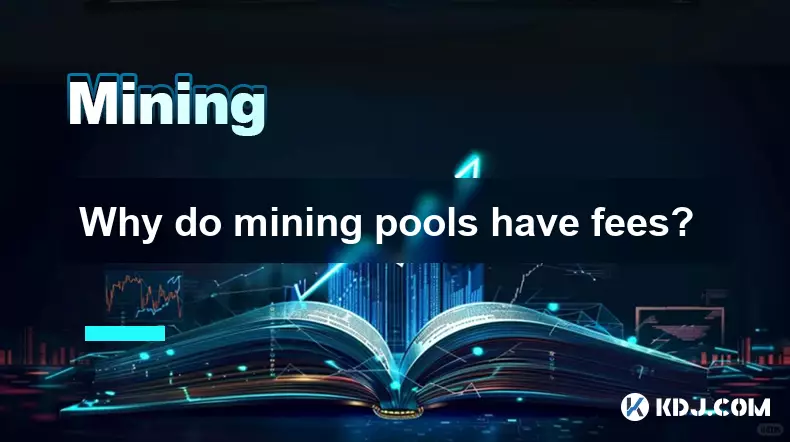
Why do mining pools have fees?
Sep 04,2025 at 09:18pm
Understanding the Role of Mining Pools in Cryptocurrency Networks1. Mining pools aggregate the computational power of multiple miners to increase the ...
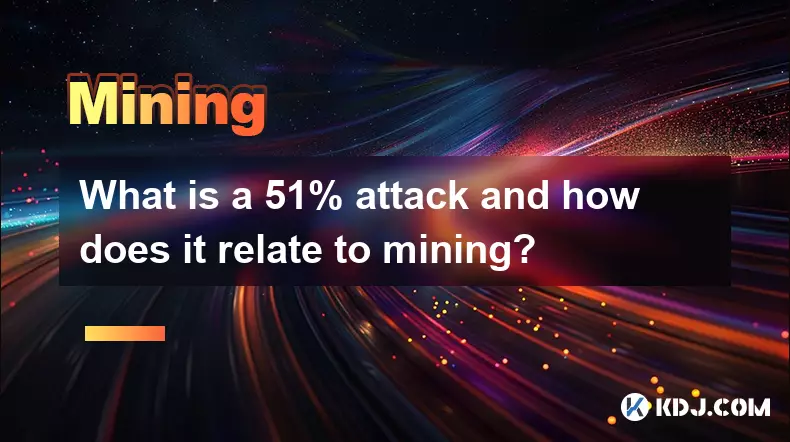
What is a 51% attack and how does it relate to mining?
Sep 04,2025 at 04:36pm
Understanding the 51% Attack in Blockchain Networks1. A 51% attack occurs when a single entity or group gains control over more than half of a blockch...
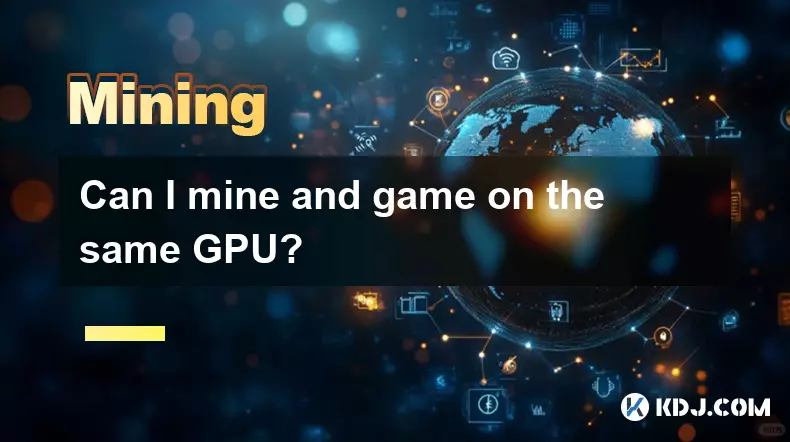
Can I mine and game on the same GPU?
Sep 04,2025 at 09:00pm
Running Mining and Gaming Simultaneously on One GPU1. Sharing a single GPU between cryptocurrency mining and gaming is technically possible but comes ...

What is the role of a stratum server in pool mining?
Sep 04,2025 at 06:01pm
Understanding the Stratum Server in Cryptocurrency Mining1. The stratum server acts as a communication bridge between mining pools and individual mine...

How much does it cost to build a mining rig?
Sep 05,2025 at 08:55am
Factors Influencing the Cost of Building a Mining Rig1. The price of a mining rig varies significantly based on several components and market conditio...
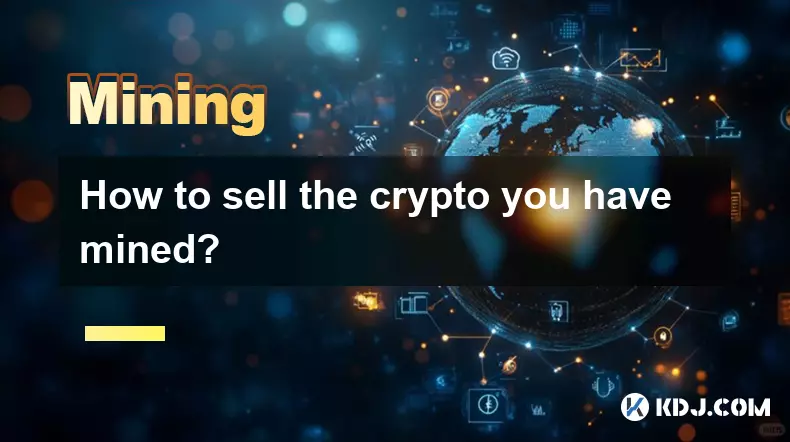
How to sell the crypto you have mined?
Sep 04,2025 at 03:54pm
Choosing the Right Exchange Platform1. Selecting a reliable cryptocurrency exchange is the first critical step in selling mined crypto. Platforms like...

Why do mining pools have fees?
Sep 04,2025 at 09:18pm
Understanding the Role of Mining Pools in Cryptocurrency Networks1. Mining pools aggregate the computational power of multiple miners to increase the ...

What is a 51% attack and how does it relate to mining?
Sep 04,2025 at 04:36pm
Understanding the 51% Attack in Blockchain Networks1. A 51% attack occurs when a single entity or group gains control over more than half of a blockch...

Can I mine and game on the same GPU?
Sep 04,2025 at 09:00pm
Running Mining and Gaming Simultaneously on One GPU1. Sharing a single GPU between cryptocurrency mining and gaming is technically possible but comes ...

What is the role of a stratum server in pool mining?
Sep 04,2025 at 06:01pm
Understanding the Stratum Server in Cryptocurrency Mining1. The stratum server acts as a communication bridge between mining pools and individual mine...

How much does it cost to build a mining rig?
Sep 05,2025 at 08:55am
Factors Influencing the Cost of Building a Mining Rig1. The price of a mining rig varies significantly based on several components and market conditio...

How to sell the crypto you have mined?
Sep 04,2025 at 03:54pm
Choosing the Right Exchange Platform1. Selecting a reliable cryptocurrency exchange is the first critical step in selling mined crypto. Platforms like...
See all articles

























